
| From Wyoming Tales and Trails This Page: Kemmerer, Mahlon S. Kemmerer, Patrick J. Quealy. |
 |

| From Wyoming Tales and Trails This Page: Kemmerer, Mahlon S. Kemmerer, Patrick J. Quealy. |
 |
|
|
|
About This Site |
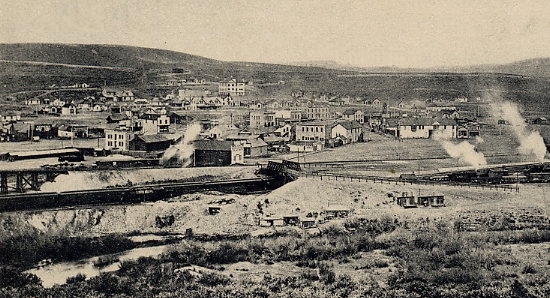 Kemmerer, 1908 Kemmerer, county seat of Lincoln County, was founded in 1897 by Patrick J. Quealy (1857-1930) with the formation of the Kemmerer Coal Company.
The coal company and the town were named after Quealy's financial backer, Pennsylvania coal magnate Mahlon S. Kemmerer. The town was established as an "independent town"; that is, a town in which lots were sold rather than leased from the coal company. This permitted independent businesses to be established. When founded, the town was also served by electricity provided by the company-owned Frontier Supply Company. The electrity was generated with a used $1,150.00 generator acquired in Utah. Mahlon S. Kemmerer (1843-1925) received his start at age 19 when he was employed by the Lehigh Coal and Navigation Comnpany. He participated in the survey of the Lehigh and Susquehanna Railroad as an assistant engineer. He then became the engineer and assistant superintendent of the Upper Lehigh Coal Company. From there, in partnership with others, Kemmerer became a commission coal dealer and devloped ownership interests in various coal and iron companies in Pennsylvania and Virginia. He was also president of the Wyoming and Missouri River Railroad which served coal mines in the northeastern Black Hills section of Wyoming. The site of Kemmerer's estate in Mauch Chunk (now Jim Thorpe), Pennsylvania, is now a park. Kemmerer's partner, Quealy, vice-president of the coal company, was originally from Ireland. In Wyoming, Quealy and his wife became active in Democratic Party politics and in St. Patrick's Church. The coal company donated land for the church. One of Quealy's sons was named after Kemmerer. In contrast, Mahlon Kemmerer was a Republican. 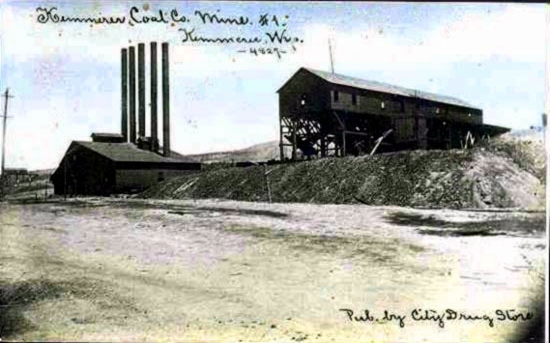 Kemmerer Mine No. 1, 1910 Although, the opening of the Kemmerer mines, constituted the major impetus for growth in the area, some mining in the area dates back to the opening of mines by the Union Pacific Coal Co. in 1881 and the construction of the Oregon Short Line Railroad from Granger to Oregon, discussed elsewhere. 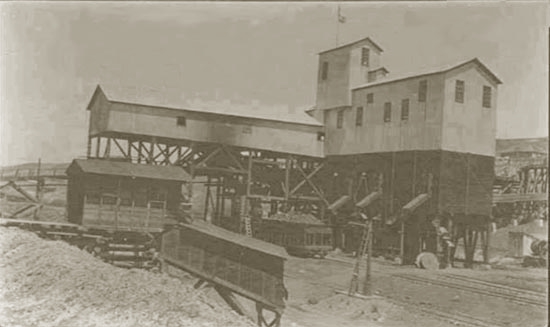 Kemmerer Mine, undated. As noted with regard to the discussion of Cumberland, coal in the area was discovered during Fremont's Second expedition in 1843. 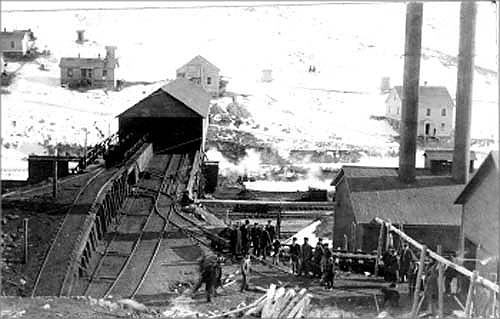 Pit mouth, tipple and boiler house, Mine No. 4, Susie, Wyo., 1912 On June 20, 1912, an explosion at the No. 4 Mine, owned by the Kemmerer Coal Co., killed 6. Mining has always been dangerous. On June 30, 1903, 169 were killed at Hanna, Wyo. An explosion at a mine in Monongah, W. Virginia in 1907, killed 362 men and boys and resulted in improved mine safty laws. Nevertheless, fatalities continued. Prior to 1910, when Congress formed the Bureau of Mines, fatalities exceeded 2,000 annually.
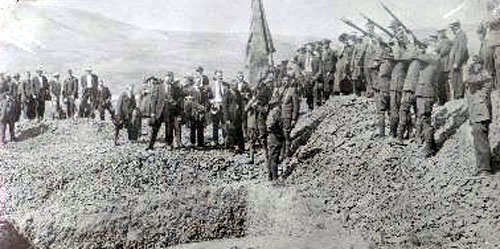 21 Gun Salute, August 14, 1923, Mine Disaster
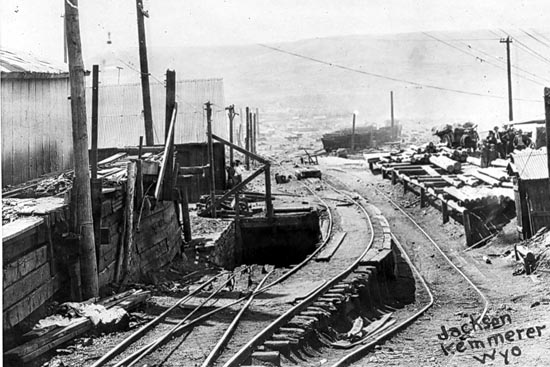 Portal, Frontier Mine, 1923. Photo by Jackson Studios
HOLD NO HOPE THAT MEN LEFT IN WORKINGS ARE ALIVE.
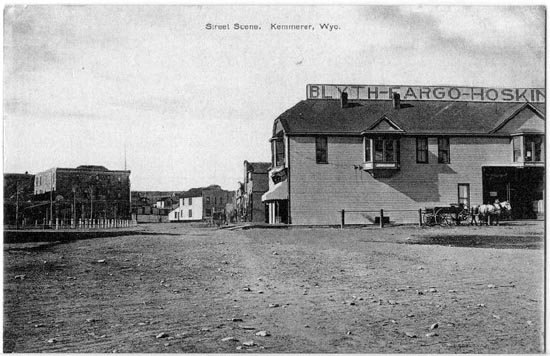 Blyth, Fargo and Hoskins Store, undated
The Bank was established in 1900. President was P. J. Quealy. The Vice President was Thomas Sneddon, Superintendent of the Diamond Coal and Coke Company (see Diamondville). A second bank, the Kemmerer Savings Bank, was formed in 1909 with Asbury D. Hoskins as president. Hoskins was elected state treasurer in 1919. Hoskins was the manager of the Blyth-Fargo-Hoskins Company. Upstairs over the bank are the law offices of Horace E. Christmas (1857-1918). Col. Christmas was born in Alton, England. He came to Wyoming from Michigan and practiced law in Rock Springs before coming to Kemmerer. Two of his sons, Horace Robert Christmas (1882-1979) and J. A. Christmas (1883-1963) followed in his footsteps. H. R. Christmas was a long term district judge and J. A. Christmas served as county attorney and prosecuting attorney.
Next page: Kemmerer continued, the Kemmerer Hotel. |